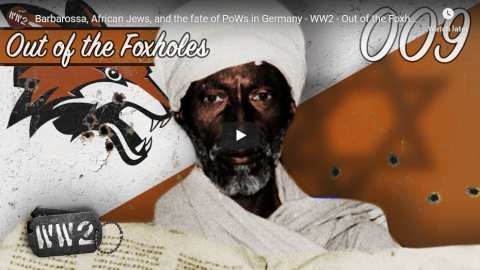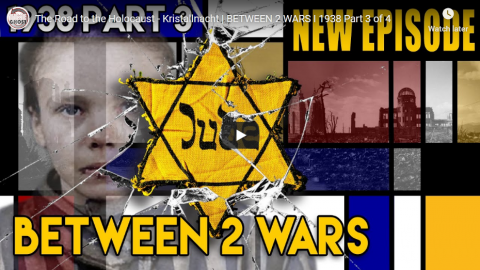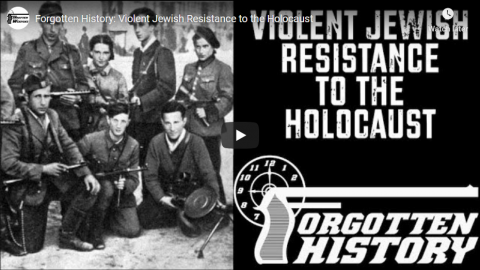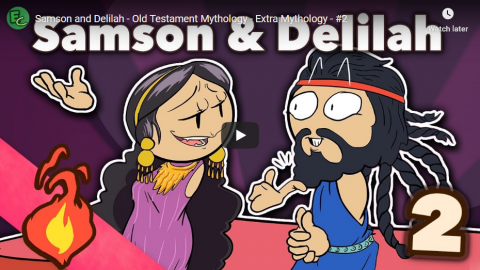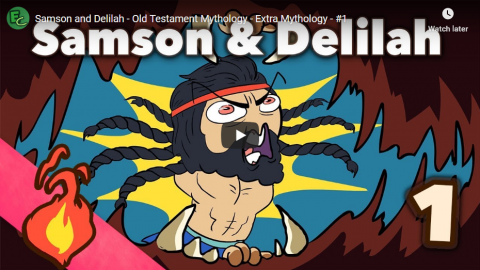It is Nietzsche’s chief thesis that most of the so-called Christian morality of today is an inheritance from the Jews, and that it is quite as much out of harmony with the needs of our race and time as the Mosaic law which prohibits the eating of oysters, clams, swine, hares, swans, terrapin and snails, but allows the eating of locusts, beetles and grasshoppers (Leviticus, XI, 4-30). Christianity, true enough, did not take over the Mosaic code en bloc. It rejected all these dietary laws, and it also rejected all the laws regarding sacrifices and most of those dealing with family relations. But it absorbed unchanged the ethical theory that had grown up among the Jews during the period of their decline — the theory, to wit, of humility, of forbearance, of non-resistance. This theory, as Nietzsche shows, was the fruit of that decline. The Jews of David’s day were not gentle. On the contrary, they were pugnacious and strong, and the bold assertiveness that seemed their best protection against the relatively weak peoples surrounding them was visualized in a mighty and thunderous Jehovah, a god of wrath and destruction, a divine Kaiser. But as their strength decreased and their enemies grew in power they were gradually forced into a more conciliatory policy. What they couldn’t get by force they had to get by a show of complaisance and gentleness — and the result was the renunciatory morality of the century or two preceding the birth of Christ, the turn-the-other-cheek morality which Christ erected into a definite system, the “slave-morality” against which Nietzsche whooped and railed nearly two thousand years afterward.
H.L. Mencken, “Transvaluation of Morals”, The Smart Set, 1915-03.
April 30, 2020
QotD: Nietzsche’s criticism of Christianity (and Judaism)
April 16, 2020
QotD: Nietzsche’s ideas
… an accurate and intelligent account of Nietzsche’s ideas, by one who has studied them and understands them, is, as Mawruss Perlmutter would say, yet another thing again. Seek in What Nietzsche Taught, by Willard H. Wright, and you will find it. Here in the midst of the current obfuscation, are the plain facts, set down by one who knows them. Wright has simply taken the eighteen volumes of the Nietzsche canon and reduced each of them to a chapter. All of the steps in Nietzsche’s arguments are jumped; there is no report of his frequent disputing with himself; one gets only his conclusions. But Wright has arranged these conclusions so artfully and with so keen a comprehension of all that stands behind them that they fall into logical and ordered chains, and are thus easily intelligible, not only in themselves, but also in their interrelations. The book is incomparably more useful than any other Nietzsche summary that I know. It does not, of course, exhaust Nietzsche, for some of the philosopher’s most interesting work appears in his arguments rather than in his conclusions, but it at least gives a straightforward and coherent account of his principal ideas, and the reader who has gone through it carefully will be quite ready for the Nietzsche books themselves.
These principal ideas all go back to two, the which may be stated as follows:
- Every system of morality has its origin in an experience of utility. A race, finding that a certain action works for its security and betterment, calls that action good; and, finding that a certain other action works to its peril, it calls that other action bad. Once it has arrived at these valuations it seeks to make them permanent and inviolable by crediting them to its gods.
- The menace of every moral system lies in the fact that, by reason of the supernatural authority thus put behind it, it tends to remain substantially unchanged long after the conditions which gave rise to it have been supplanted by different, and often diametrically antagonistic conditions.
In other words, systems of morality almost always outlive their usefulness, simply because the gods upon whose authority they are grounded are hard to get rid of. Among gods, as among office-holders, few die and none resign. Thus it happens that the Jews of today, if they remain true to the faith of their fathers, are oppressed by a code of dietary and other sumptuary laws — i.e., a system of domestic morality — which has long since ceased to be of any appreciable value, or even of any appreciable meaning, to them. It was, perhaps, an actual as well as a statutory immorality for a Jew of ancient Palestine to eat shell-fish, for the shell-fish of the region he lived in were scarecly fit for human food, and so he endangered his own life and worked damage to the community of which he was a part when he ate them. But these considerations do not appear in the United Sates of today. It is no more imprudent for an American Jew to eat shell-fish than it is for him to eat süaut;ss-und-sauer. His law, however, remains unchanged, and his immemorial God of Hosts stands behind it, and so, if he would be counted a faithful Jew, he must obey it. It is not until he definitely abandons his old god for some modern and intelligible god that he ventures upon disobedience. Find me a Jew eating oyster fritters and I will show you a Jew who has begun to doubt very seriously that the Creator actually held the conversation with Moses described in the ninteenth and subsequent chapters of the Book of Exodus.
H.L. Mencken, “Transvaluation of Morals”, The Smart Set, 1915-03.
April 3, 2020
March 22, 2020
QotD: The notion of Hell
I know we all follow the theological debates within Catholicism about which saint got in touch with which angel to channel which biblical dead person — don’t they have a show on CNN that goes over each week’s highlights? — but one thing you never do, in Catholicism, Protestantism, or Pentecostal Snake-Handlingism, for that matter, is say there’s no hell.
Because that would be Jewish. The Jews have never cared that much about hell. They grudgingly admit that it’s probably there, but it’s just this place that, after you die, you feel intense shame before God for all the times you yelled at your wife or failed to stuff two dollars into the self-parking kiosk. The Hebrew word for hell is “Gehenna,” which is the name of the garbage dump outside Jerusalem that (a) smelled bad, and (b) was always on fire. I can imagine generations of parents using it as a threat to their unruly children: “If you don’t straighten up right this minute, I’m gonna throw you into the smelly garbage dump with the smoke cloud over it!”
So when the Christians come along, they take Gehenna and run with it. They use the name Gehenna to mean hell, and that’s not just trash burning out there, it’s demons and human souls, and it burns forever because it’s mixed with brimstone, which does indeed smell bad when you burn it. Actually brimstone turns red and burns blue, so if you’ve got brimstone out there, you’ve got a blood red gelatinous mass with a blue flame, or what the great preachers call …
The Lake of Fire.
[…]
At any rate, the reason the Catholic press got their cassocks in a bunch is that, over the past half century or so, a lot of theologians have been saying, “Maybe we got the whole hell thing wrong.” They’ve looked back over the appropriate scriptures and decided that, after you die, you don’t get thrown into the flaming garbage dump, you just vanish from all human history, as though you never existed. There’s no memory or trace of you, you’re erased from the universe.
And this might be what the Pope said he believes. After Eugenio reported their conversation, the Vatican scrambled around and issued statements saying that, no, the Pope didn’t go outside the catechism and they were just chewing the fat and please everybody let’s not get carried away. Yes, Gehenna is real. Yes, the Pope believes in hell. Yes, the Pope is Catholic.
Joe Bob Briggs, “Pope Forgets the Lake of Fire”, Taki’s Magazine, 2018-06-21.
March 12, 2020
The Road to the Holocaust – Kristallnacht | BETWEEN 2 WARS I 1938 Part 3 of 4
TimeGhost History
Published 11 Mar 2020After years of gradually increasing persecution, the Nazis institute a nationwide pogrom on the night of November 9, 1938. It will signal the end of Jewish life in Germany.
Join us on Patreon: https://www.patreon.com/TimeGhostHistory
Hosted by: Indy Neidell
Written by: Francis van Berkel
Directed by: Spartacus Olsson and Astrid Deinhard
Executive Producers: Bodo Rittenauer, Astrid Deinhard, Indy Neidell, Spartacus Olsson
Creative Producer: Joram Appel
Post-Production Director: Wieke Kapteijns
Research by: Francis van Berkel
Edited by: Daniel Weiss
Sound design: Marek KamińskiSources:
Bundesarchiv_Bild:
102-04051A, 102-14469, 102-16475, 119-03-16-06,
119-04-29-36, 119-04-29-38, 119-2671-07, 119-5592-03A,
133-075,_Worms, 146-1970-041-46, 146-1970-061-65,
146-1979-046-22, 146-1982-174-26, 146-1982-174-27,
146-1984-092-26, 146-1988-078-07, 146-1989-071-05,
152-64-25A,_Wien, 152-64-29A,_Wien, 152-65-04,_Wien,
183-1982-0809-502, 183-1987-0703-514, 183-2006-0429-502,
183-R99542, 183-S21437, 183-S72707, 183-86686-0008,From the Noun Project:
noun_Government by Adrien Coquet,
noun_jail by Strongicon,
noun_Death by Icon Island,Colorizations by:
– Daniel WeissSoundtracks from Epidemic Sound:
– “The Inspector 4” – Johannes Bornlöf
– “Not Safe Yet” – Gunnar Johnsen
– “Last Point of Safe Return” – Fabien Tell
– “Guilty Shadows 4” – Andreas Jamsheree
– “Imperious” – Bonnie Grace
– “Death And Glory 1” – Johannes Bornlöf
– “Deviation In Time” – Johannes Bornlof
– “Dark Beginning” – Johan Hynynen
– “An Ancient Dome” – Trabant 33
– “Death And Glory 3” – Johannes Bornlöf
– “First Responders” – SkryaA TimeGhost chronological documentary produced by OnLion Entertainment GmbH.
January 17, 2020
Zionism, Arabism & Colonialism in the Middle East | BETWEEN 2 WARS I 1936 Part 1 of 3
TimeGhost History
Published 16 Jan 2020After more than twenty years of colonial management, promises made but few promises kept and ethnic & cultural clashes in the area, unrest in the Middle East erupts in violence. A series of movements originate in this time, with long lasting consequences.
Watch our episode about the Middle east in the 1920s here: https://youtu.be/y6tSvRbvh2s
Join us on Patreon: https://www.patreon.com/TimeGhostHistory
Hosted by: Indy Neidell
Written by: Joram Appel
Directed by: Spartacus Olsson and Astrid Deinhard
Executive Producers: Bodo Rittenauer, Astrid Deinhard, Indy Neidell, Spartacus Olsson
Creative Producer: Joram Appel
Post-Production Director: Wieke Kapteijns
Research by: Joram Appel
Fact-Checking by: Jonas Srouji
Edited by: Daniel Weiss
Sound design: Marek KaminskiSources:
Arab by LINECTOR from the Noun Project
Bomb by P Thanga Vignesh from the Noun ProjectColorizations by:
– Dememorabilia – https://www.instagram.com/dememorabilia/
– Adrien.Colorisation – https://instagram.com/adrien.colorisa…
– Norman StewartSoundtracks from Epidemic Sound:
– “Dawn Of Civilization” – Jo Wandrini
– “The Inspector 4” – Johannes Bornlöf
– “Easy Target” – Rannar Sillard
– “First Responders” – Skrya
– “Not Safe Yet” – Gunnar Johnsen
– “Deflection” – Reynard Seidel
– “The Charleston 3” – Håkan ErikssonA TimeGhost chronological documentary produced by OnLion Entertainment GmbH.
From the comments:
TimeGhost History
42 minutes ago (edited)
We have already covered “Carving up the Middle East” in one of our first Between Two Wars episodes (watch here: https://youtu.be/y6tSvRbvh2s), but we felt like we had to return to the area one more time as all that carving had quite some consequences. This means that a large part of this episode is about colonialism, Zionism, Arabism, race and ethnicity. I’m also aware of the complicated modern-day conflict in the area, many of which originate in [the events covered in] this episode. However, we would like the comment section to be reserved for debating the history. We’re not going to engage with people discussing modern-day issues and politics, and we’re going to be quite strict in monitoring any racist or otherwise hateful comments.Cheers,
Joram
December 29, 2019
Hanukkah – December 28th – TimeGhost of Christmas Past – DAY 5
TimeGhost History
Published 28 Dec 2019Join us on Patreon: https://www.patreon.com/TimeGhostHistory
Hosted by: Indy Neidell
Directed by: Spartacus Olsson and Astrid Deinhard
Executive Producers: Bodo Rittenauer, Astrid Deinhard, Indy Neidell, Spartacus Olsson
Creative Producer: Joram Appel
Post-Production Director: Wieke Kapteijns
Edited by: Mikołaj Cackowski, Iryna Dulka
Sound design: Marek KamińskiSoundtracks from Epidemic Sound:
– “Reunion” – Wendel Scherer
– “Fields Of Joy 16” – Jonatan JärpehagA TimeGhost chronological documentary produced by OnLion Entertainment GmbH.
September 25, 2019
Forgotten History: Violent Jewish Resistance to the Holocaust
Forgotten Weapons
Published 24 Sep 2019http://www.patreon.com/ForgottenWeapons
Cool Forgotten Weapons merch! http://shop.bbtv.com/collections/forg…
I wrote this paper back in 2003 or 2004 for a college class I was taking (HIST 595 – The Holocaust And Genocide). Today, it sounds a bit amateurish — but I suppose that is to be expected of something written by someone barely out of their teens. I think it could be much better written today, and its subject matter deserves much greater depth, but I believe its conclusions are sound. In particular, I would not be so casual in identifying the perpetrators simply as “the Germans”, as this is an unfair simplification of the guilt for the crimes of the Holocaust.
Some people will interpret this paper though narrow political viewpoints today, which is unfortunate. I shouldn’t have to say it, but obviously such interpretations are certainly not reflective of my own beliefs.
Bibliography:
Ainsztein, Reuben. Jewish Resistance in Nazi-Occupied Europe. Paul Elek Ldt, London: 1974.
Arad, Yitzhak. Ghetto in Flames. Holocaust Library, New York: 1982.
Berenbaum, Michael. The World Must Know. New York: Little, Brown, and Co, 1993.
Donat, Alexander. The Death Camp Treblinka. New York: Holocaust Library, 1979.
Gutman, Yisrael. The Jews of Warsaw, 1939-1943. Indiana University Press, Bloomington:1982.
Mark, Ber. Uprising in the Warsaw Ghetto. Schocken Books, New York: 1975.
Novitch, Miriam. Sobibor: Martydom and Revolt. Holocaust Library, New York: 1980.
Rotem, Simha. Memoirs of a Warsaw Ghetto Fighter. New Haven: Yale University Press, 1994.
Zuckerman, Yitzhak. A Surplus of Memory. University of California Press, Berkeley: 1993.
Contact:
Forgotten Weapons
6281 N. Oracle #36270
Tucson, AZ 85704
September 24, 2019
Samson and Delilah – Old Testament Mythology – Extra Mythology – #2
Extra Credits
Published on 23 Sep 2019After killing 1000 men, Samson runs into more trouble with the Philistines. Samson is a Judge, but he may not be the best judge of romantic partners… When Delilah betrays Samson for silver, all hope seems lost. But Samson has one last favor to ask.
September 18, 2019
The Canadian Charter of Rights and Freedoms* (*not all sections apply in Quebec)
Andrew Coyne on the disgraceful habit of the federal government (and nine provincial governments) to look the other way when Quebec decides that some of the guarantees in the Charter don’t apply in La Belle Province:
For many observant persons, particularly Muslims, Sikhs and orthodox Jews, this amounts to a religious hiring bar: the wearing of the hijab, the turban and the kippa are key requirements of their faith, and as such core elements of their identity. To demand that they work uncovered is, in effect, to post a sign saying Muslims, Sikhs and Jews need not apply.
We should be clear on this. It’s not just a dress code, or an infringement of religious freedom, or religious discrimination, or those other abstract phrases you hear tossed about. We are talking about a law barring employment in much of the public sector — not just police and judges, but government lawyers and teachers — to certain religious minorities.
Existing workers may have been grandfathered, but only so long as they remain in their current jobs. Should they ever move, or seek a promotion, they will face the same restrictions. The signal to the province’s religious and, let’s say it, racial minorities, vulnerable as they will be feeling already after the mounting public vitriol to which they have been exposed in the name of the endless “reasonable accommodation” debate, is unmistakable: you are not wanted here. Not surprisingly, many are getting out — out of the public service, out of Quebec.
That this is actually happening, in 2019, in a province of Canada — members of religious minorities being driven from their jobs, and for no reason other than their religion — is sickening, and shameful. That shame is not reserved to Premier Francois Legault or his CAQ government, the people responsible for designing and implementing this disgraceful exercise in segregation, this manifestly cruel attempt to cleanse the province’s schools and courts of religious minorities. It is no less shaming to the rest of us, everywhere across Canada, so long as we permit it to continue.
That is, so far as we are capable of feeling it. But experience has taught us to look the other way when it comes to Quebec, to tell ourselves that it is none of our affair, that we must not raise a fuss when the province explicitly elevates the interests of its ethnic and linguistic majority over those of its minorities, or threatens the country’s life for long years at a time — the beloved “knife at the throat” strategy — to back its escalating fiscal and constitutional demands. We dare not. We cannot. For then Quebec would leave.
September 11, 2019
Samson and Delilah – Old Testament Mythology – Extra Mythology – #1
Extra Credits
Published on 9 Sep 2019Join the Patreon community! http://bit.ly/EMPatreon
It was a time of trial for the tribes of Israel. They were no nation, but a loose confederation bound together by their divine covenants — which they had just broken. Amid this political and social chaos, a child was born, instructed by God to keep the Nazirite oath — stay away from alcohol, don’t eat unclean food, and don’t shave — and he would become a man of incredible strength.
Samson was on a mission from God to never drink alcohol, to not eat honey found in a lion’s carcass, and to not cut his hair ever. FORESHADOWING!
July 2, 2019
QotD: Italy and the Nazi Final Solution
Surprisingly given the bad associations I have with the word “fascist”, Mussolini’s Italy may win third prize in the Righteous Among The Nations stakes. [Hannah] Arendt describes it [in Eichmann in Jerusalem] as “sabotaging” the Final Solution within its borders despite nominal alliance with Germany:
Colorized portrait of Italian Fascist leader Benito Mussolini in 1940.
Colorization by Roger Viollet via Wikimedia Commons.
The gentlemen of the Foreign Office could not do much about it, because they always met the same subtly veiled resistance, the same promises and the same failures to fulfill them. The sabotage was all the more infuriating as it was carried out openly, in an almost mocking manner. The promises were given by Mussolini himself or other high-ranking officials, and if the generals simply failed to fulfill them, Mussolini would make excuses for them on the ground of their “different intellectual formation”. Only occasionally would the Nazis be met with a flat refusal, as when General Roatta declared that it was “incompatible with the honor of the Italian Army” to deliver the Jews from Italian-occupied territory in Yugoslavia to the appropriate German authorities.
An element of farce had never been lacking even in Italy’s most serious efforts to adjust to its powerful friend and ally. When Mussolini, under German pressure, introduced anti-Jewish legislation in the late thirties he stipulated the usual exemptions – war veterans, Jews with high decorations, and the like – but he added one more category, namely, former members of the Fascist Party, together with their parents and grandparents, their wives and children and grandchildren. I know of no statistics relating to this matter, but the result must have been that the great majority of Italian Jews were exempted. There can hardly have been a Jewish family without at least one member in the Fascist Party, for this happened at a time when Jews, like other Italians, had been flocking for almost twenty years into the Fascist movement, since positions in the Civil Service were open only to members. And the few Jews who had objected to Fascism on principle, Socialists and Communists chiefly, were no longer in the country. Even convinced Italian anti-Semites seemed unable to take the thing seriously, and Roberto Farinacci, head of the Italian anti-Semitic movement, had a Jewish secretary in his employ…
What in Denmark was the result of an authentically political sense, an inbred comprehension of the requirements and responsibilities of citizenship and independence – “for the Danes … the Jewish question was a political and not a humanitarian question” (Leni Yahil) – was in Italy the outcome of the almost automatic general humanity of an old and civilized people.
Scott Alexander, “Book review: Eichmann in Jerusalem”, Slate Star Codex, 2017-01-30.
April 18, 2019
Holiday Tales: Easter!
Overly Sarcastic Productions
Published on 30 Mar 2018Happy Good Friday, everyone! Easter’s in two days, so let’s take a hot minute to see if we can figure out what exactly we’re celebrating when we pull out our egg baskets and chocolate bunnies, and why exactly we do it the way we do. Will we be able to unravel the mysteries of Easter before Jesus’s death timer hits zero? (Spoiler: no!)
PATREON: www.patreon.com/user?u=4664797
March 10, 2019
QotD: Surnames and taxes
… (related: Scott examined some of the same data about Holocaust survival rates as Eichmann In Jerusalem, but made them make a lot more sense: the greater the legibility of the state, the worse for the Jews. One reason Jewish survival in the Netherlands was so low was because the Netherlands had a very accurate census of how many Jews there were and where they lived; sometimes officials saved Jews by literally burning census records).
Centralized government projects promoting legibility have always been a two-steps-forward, one-step back sort of thing. The government very gradually expands its reach near the capital where its power is strongest, to peasants whom it knows will try to thwart it as soon as its back is turned, and then if its decrees survive it pushes outward toward the hinterlands.
Scott describes the spread of surnames. Peasants didn’t like permanent surnames. Their own system was quite reasonable for them: John the baker was John Baker, John the blacksmith was John Smith, John who lived under the hill was John Underhill, John who was really short was John Short. The same person might be John Smith and John Underhill in different contexts, where his status as a blacksmith or place of origin was more important.
But the government insisted on giving everyone a single permanent name, unique for the village, and tracking who was in the same family as whom. Resistance was intense:
What evidence we have suggests that second names of any kind became rare as distance from the state’s fiscal reach increased. Whereas one-third of the housholds in Florence declared a second name, the proportion dropped to one-fifth for secondary towns and to one-tenth in the countryside. It was not until the seventeenth century that family names crystallized in the most remote and poorest areas of Tuscany – the areas that would have had the least contact with officialdom. […]
State naming practices, like state mapping practices, were inevitably associated with taxes (labor, military service, grain, revenue) and hence aroused popular resistance. The great English peasant rising of 1381 (often called the Wat Tyler Rebellion) is attributed to an unprecedented decade of registration and assessments of poll taxes. For English as well as for Tuscan peasants, a census of all adult males could not but appear ominous, if not ruinous.
Scott Alexander, “Book Review: Seeing Like a State”, Slate Star Codex, 2017-03-16.
January 23, 2019
A new beginning for the Middle East: The Cyrus Cylinder and Ancient Persia
The British Museum
Published on 18 Jul 2014The Cyrus Cylinder is one of the most famous objects to have survived from the ancient world. It was inscribed in Babylonian cuneiform on the orders of Persian King Cyrus the Great (559-530 BC) after he captured Babylon in 539 BC.
The cylinder is often referred to as the first bill of human rights as it appears to encourage freedom of worship throughout the Persian Empire and to allow deported people to return to their homelands. It was found in Babylon in modern Iraq in 1879 during a British Museum excavation.

